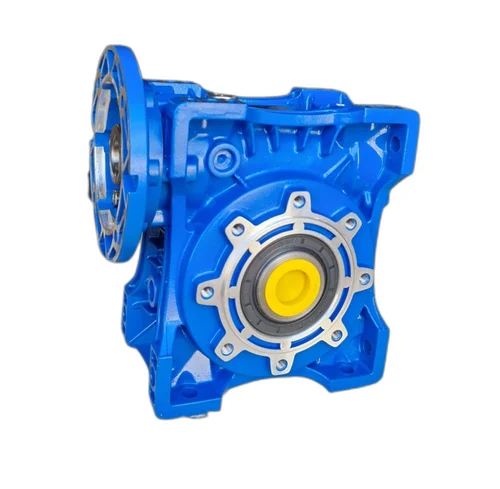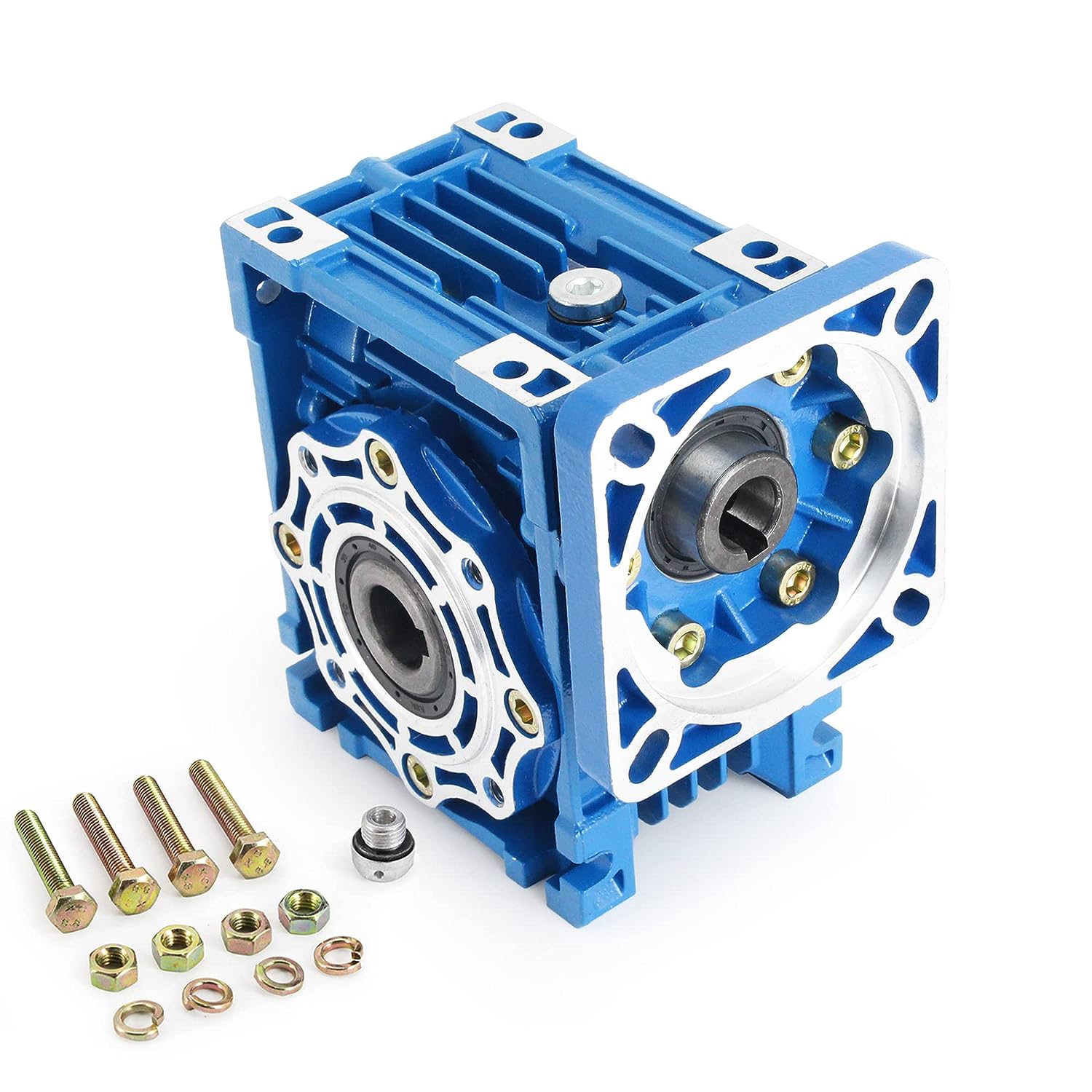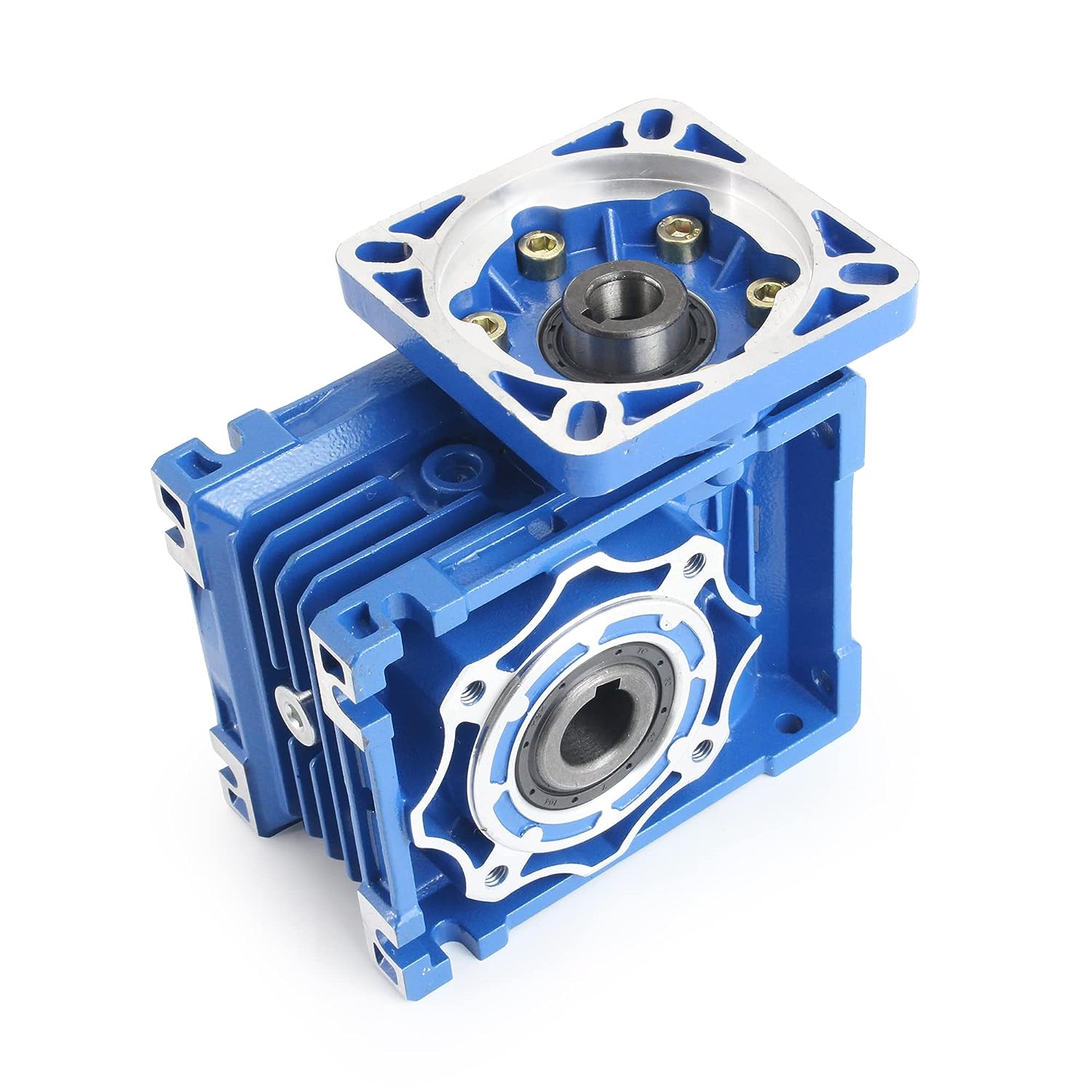Product Description
High Rpm RV series Aluminum Alloy Worm Gear box NMRV 571-150 Reducer Variable Wheel Drive Speed Reduction Worm Gearbox
Product Parameters
Specification
|
Type |
Worm Gearbox/Worm Gear Speed Reducer |
|
Model |
NMRV:571,030,040,050,063,075,090,110,130,150 |
|
Center distance |
25-150mm |
|
Ratio |
5,7.5,10,15,20,25,30,40,50,60,80,100 |
|
Torque |
1.8-1800Nm |
|
Motor |
2 pole, 4 pole, 6 pole |
|
Mounting position |
Omnidirectional |
|
Color |
Blue/Silver grey Or On request |
|
Material |
NMRV571~090:Aluminum alloy; NMRV110~150 Cast iron |
Details
Multiple inputs and outputs
Feature
1. Mad of high-quality aluminum alloy,light weight and non-rusting
2. Large output torque
3. Smooth in running and low in noise,can work long time in dreadful conditions.
4. High in radiating efficiency.
5. Good-looking in appearance,durable in service life and small in volume.
6. Suitable for omnibearing installation.
contact-info.html
|
Model |
NMRV571, NMRV030, NMRV040, NMRV050, NMRV063, NMRV075, NMRV090, NMRV110, NMRV130, NMRV150 |
|
Ratio |
5,7.5,10,15,20,25,30,40,50,60,80,100 |
|
Output Torque |
1.8-1760Nm |
|
Application |
Machinery Industry |
|
Input Speed |
900-2800RPM |
|
Output Speed |
10-250RPM |
|
Material |
Housing: Size 25-110 Is Aluminum Alloy, Size 110-150 Is Cast-Iron |
|
Worm Wheel: ZCuSn10Pb1 |
|
|
Worm:20Cr |
|
|
Pinion:Tin Bronze |
|
|
Output Shaft: Steel-45# |
|
|
IEC Flange |
IEC Standard Flange Or On Customer Request |
Detailed Photos
/* January 22, 2571 19:08:37 */!function(){function s(e,r){var a,o={};try{e&&e.split(“,”).forEach(function(e,t){e&&(a=e.match(/(.*?):(.*)$/))&&1
| Hardness: | Hardened Tooth Surface |
|---|---|
| Installation: | 90 Degree |
| Layout: | Expansion |
| Gear Shape: | Bevel Gear |
| Step: | Single-Step |
| Type: | Gear Reducer |
| Samples: |
US$ 30/Piece
1 Piece(Min.Order) | |
|---|

Replacing Parts vs. Replacing the Whole NMRV Gearbox
Whether to replace parts or the entire NMRV gearbox depends on the extent of the issue and the availability of replacement parts:
Replacing Parts: If a specific component is faulty or worn, you can often replace that part. This is a cost-effective solution and is feasible when the damage is isolated to a single component.
When to Replace Parts:
- Minor wear on gears, bearings, or seals.
- Specific components are damaged, but the rest of the gearbox is in good condition.
Replacing the Whole Gearbox: If multiple components are severely damaged, the gearbox housing is cracked, or the gearbox repeatedly experiences issues, replacing the entire unit might be a better option.
When to Replace the Whole Gearbox:
- Severe damage to multiple components.
- Cracks or damage to the gearbox housing.
- Frequent breakdowns and repairs.
Professional Assessment: In some cases, it’s best to consult a professional technician to assess the situation and provide recommendations. They can guide you on whether to replace parts or the entire unit based on the specific circumstances.
Ultimately, the decision between replacing parts and replacing the whole NMRV gearbox depends on factors such as the extent of damage, cost considerations, and the expertise of professionals.

Maintenance and Service of an NMRV Gearbox
Maintaining and servicing an NMRV (worm gear) gearbox is essential to ensure its proper functioning, longevity, and reliability. Here are the steps and practices involved in maintaining and servicing an NMRV gearbox:
- Lubrication: Regularly lubricate the gearbox as per the manufacturer’s recommendations. Use the appropriate lubricant to ensure smooth operation and to reduce friction and wear between the gear components.
- Inspection: Periodically inspect the gearbox for any signs of wear, damage, or leaks. Check for unusual noises, vibrations, or overheating during operation.
- Cleaning: Keep the gearbox and its surrounding area clean to prevent the buildup of dirt, debris, or contaminants that could potentially affect its performance.
- Tighten Fasteners: Check and tighten any fasteners, bolts, or screws that might have loosened due to vibrations during operation.
- Seal Inspection: Examine the seals and gaskets for signs of wear or leakage. Replace them if necessary to prevent oil leaks or ingress of contaminants.
- Temperature Monitoring: Monitor the operating temperature of the gearbox. Excessive heat can lead to premature wear and damage. Ensure proper ventilation and cooling if required.
- Address Issues Promptly: If you notice any unusual behavior, noise, or performance issues with the gearbox, address them promptly. Ignoring problems can lead to more significant damage over time.
- Replace Worn Parts: If any components, such as gears, bearings, or seals, are worn or damaged, replace them with genuine manufacturer-approved parts.
- Professional Service: For more extensive servicing, repairs, or overhauls, consult a professional with expertise in gearbox maintenance. They can disassemble, inspect, and reassemble the gearbox accurately.
By following these maintenance and servicing practices, you can ensure that your NMRV gearbox remains in optimal condition, delivering reliable performance and an extended operational lifespan.

Choosing the Right Size NMRV Gearbox for Your Application
Selecting the appropriate size NMRV gearbox for your application involves considering several important factors:
- Input Power: Determine the power requirement of your application, including both the input speed and the required output torque.
- Service Factor: Take into account any potential overloads or unexpected conditions that may occur during operation. Applying a service factor ensures the gearbox can handle occasional peak loads.
- Output Speed: Calculate the desired output speed of the gearbox. This is crucial for ensuring the gearbox meets the requirements of your application.
- Operating Conditions: Consider the environmental conditions in which the gearbox will operate, including temperature, humidity, and exposure to dust or chemicals.
- Mounting and Space: Evaluate the available space for mounting the gearbox and ensure it fits within the allotted dimensions.
- Shaft Configuration: Determine whether the gearbox requires a specific shaft configuration or if additional components such as couplings are needed.
- Application Type: Consider the type of application the gearbox will be used in, such as conveyor systems, agitators, mixers, or other specific applications.
- Load Characteristics: Analyze the load characteristics, including the type of load (constant, intermittent, shock), to ensure the gearbox can handle the load variations.
It’s essential to work closely with gearbox manufacturers or distributors who can provide technical support and assist in selecting the right size NMRV gearbox based on your specific application requirements.


editor by CX 2024-04-12